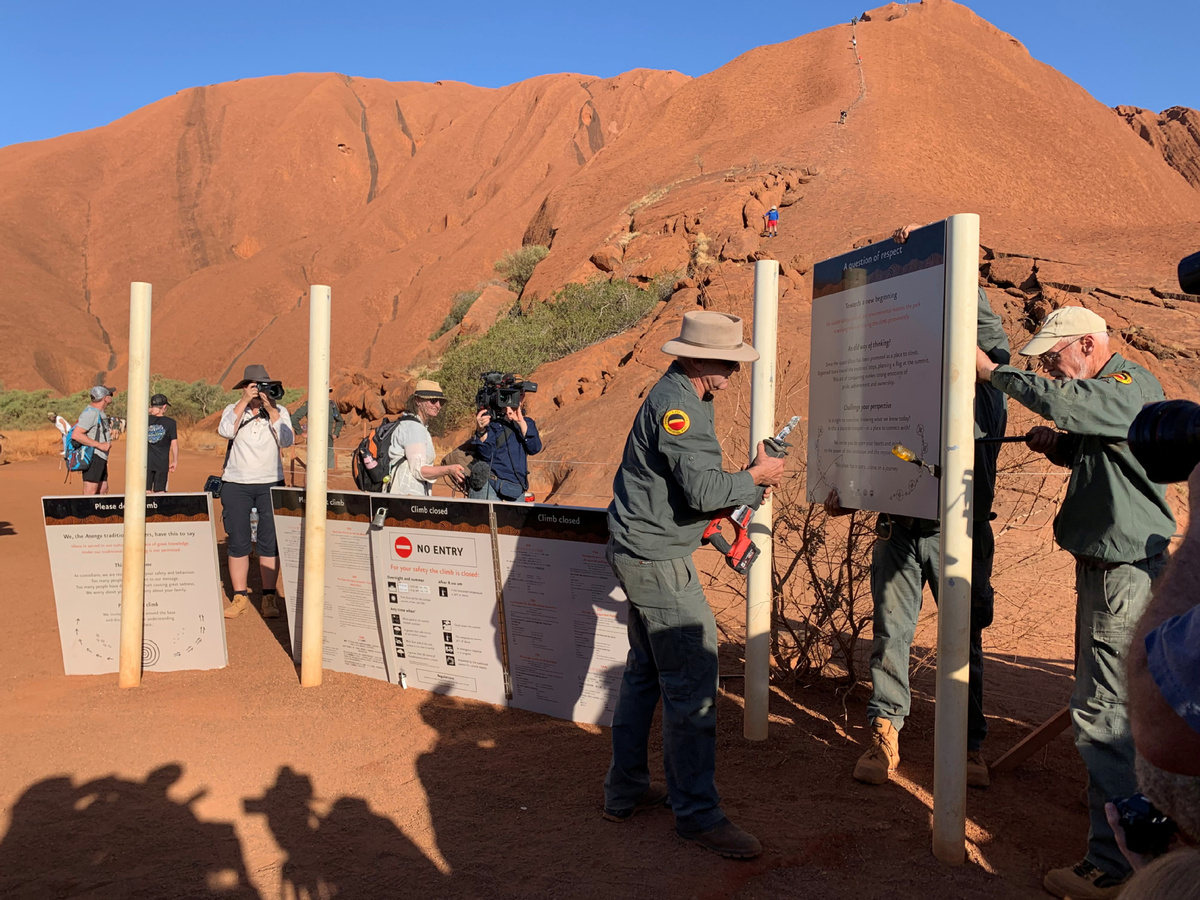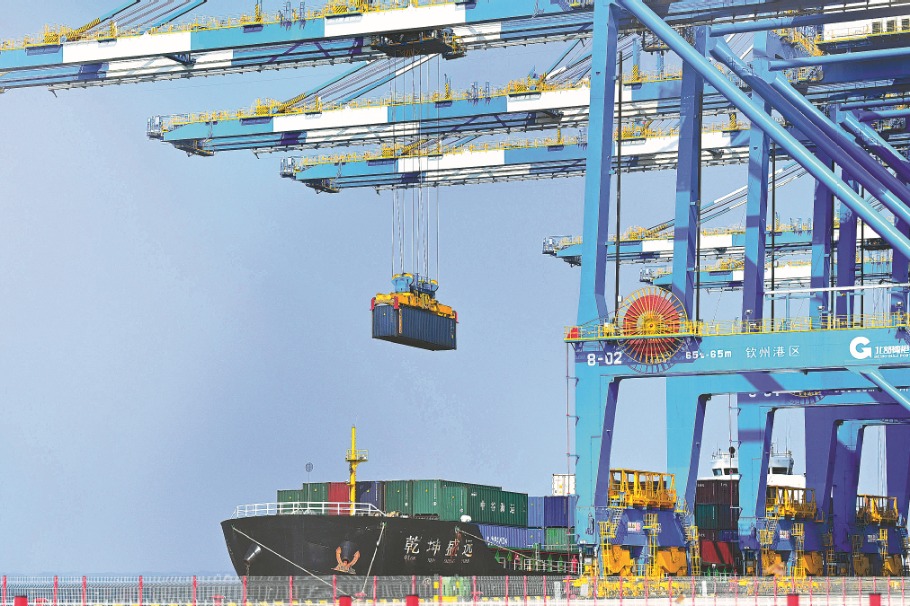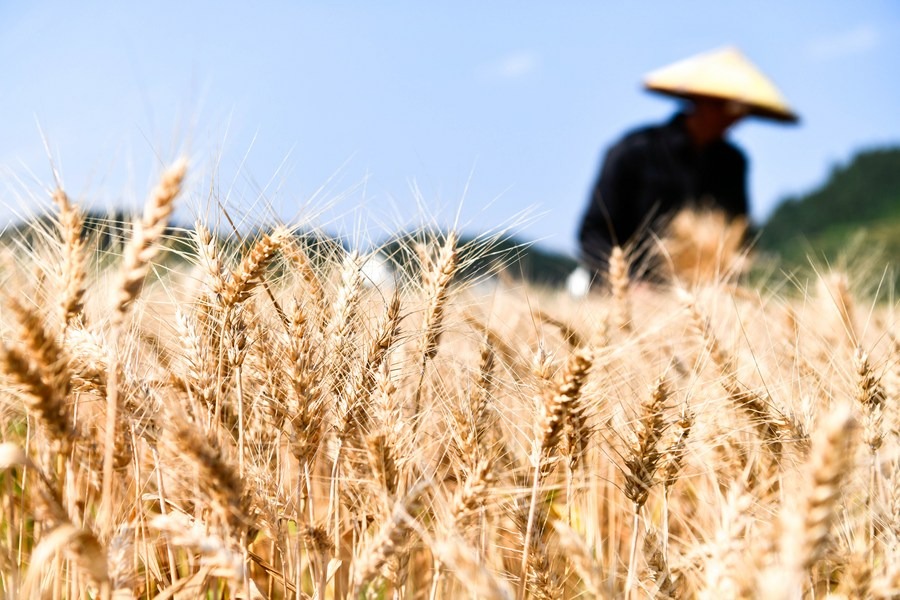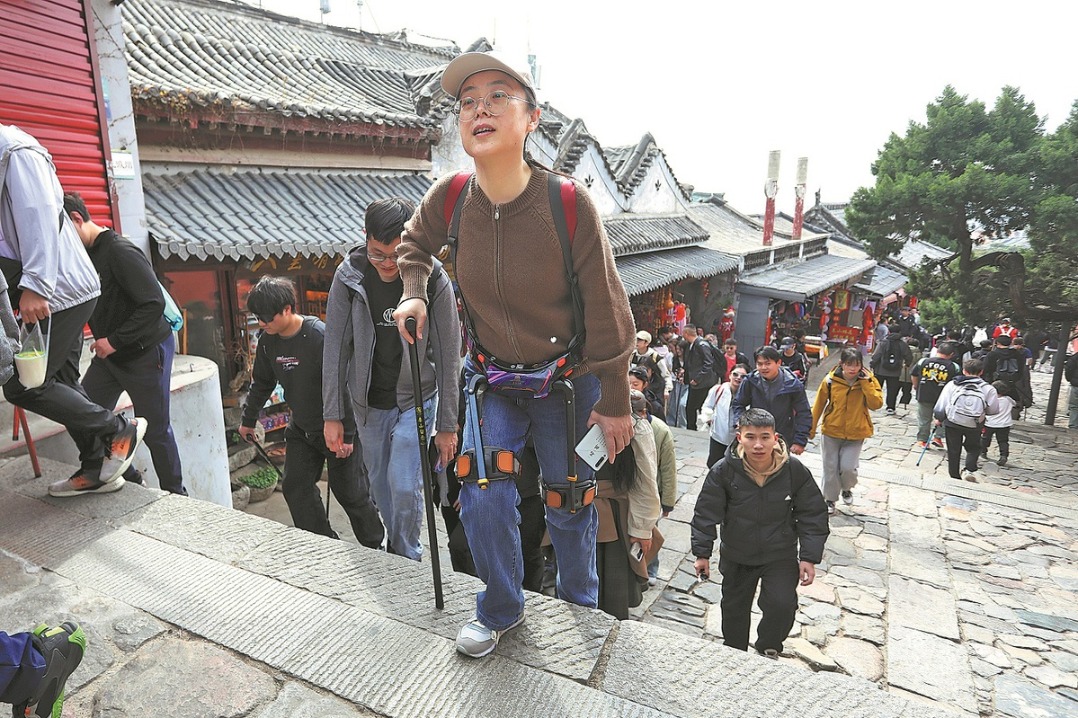Calls grow to protect indigenous sites
By Karl Wilson in Sydney | China Daily Global | Updated: 2019-11-11 09:26
Indigenous activists and traditional owners in Australia, encouraged by the recent closure of the country's iconic Uluru rock structure to tourists, are calling for respect for and similar bans on more sites considered "home" or sacred by aboriginal people across the country.

Among a growing list of places that Australia's indigenous people want closed are popular walking sites such as Mount Warning in northern New South Wales state, Mount Beerwah in the Glass House Mountains on Queensland state's Sunshine Coast and St. Mary Peak in the Flinders Ranges in South Australia.
The climbing ban on Uluru, also known as Ayers Rock, took effect on Oct 26. In its wake, there have been renewed calls by the local aboriginal people to close access to Mount Warning.
Mount Warning in the Tweed Range, also known to the local aboriginal community as Wollumbin, attracts about 100,000 visitors annually. But to the traditional owners, the Bundjalung people, it has been a sacred site for thousands of years.
A spokesperson for the Tweed Shire Council said: "There have been a number of calls over the years to close Mount Warning to walkers, but nothing has ever come from it.
"I expect now we will probably see a greater effort on the back of the Uluru closure to follow suit.
"To the local aboriginal community, these sites go to the very heart of their existence and belonging as a people.
"What we try to do is work with the local aboriginal leaders (to come up with something) that works for everyone."
In South Australia, visitors to the Flinders Ranges, 200 kilometers north of Adelaide, are being asked by the traditional owners not to climb St. Mary Peak.
St. Mary Peak is central to the Adnyamathanha creation story, which involves two serpents entwined to form a huge natural amphitheater in the foothills of the ranges where rock art can be traced back 5,000 years.
"All we want to do is to stop people walking up the peak. You get the same views of the area from other places," Adnyamathanha Traditional Landowners Association chairman Michael Anderson said.
"We would rather educate people about the importance of the site, rather than ban them altogether."
From midnight on Oct 25, the climbing track on Uluru was officially closed - something traditional owners had been pushing for.
The Anangu people celebrated the closure at the base of the rock to signify to new visitors that it was no longer available or lawful. But it proved a contentious issue and gained global headlines.
A new sign was placed at the base of the rock to inform visitors of the new policy. It read, "This is our home" and "Please don't climb".
Professor Jakelin Troy, director of aboriginal and Torres Strait islander research at the University of Sydney, said walking on Uluru was "disrespectful" to the "country" of the Anangu people.
"In disrespecting country we disrespect its people," said Troy, who is a member of the aboriginal community.
"This is exactly the same reason why people are not allowed to walk on places that are sacred and highly respected in all cultures."
Freya Higgins-Desbiolles, a senior lecturer in tourism management at the University of South Australia, said: "As a non-indigenous person, it is incredibly important for us to understand just how important sites like Uluru are to the Anangu people.
"Aboriginal people in this country today have a voice and they are using that voice to have their sacred sites respected."
In March, the Victorian state government announced a climbing ban in much of the Grampians National Park, west of Melbourne.
Covering more than 165,000 hectares, the park is home to about 90 percent of southeastern Australia's aboriginal rock art. But over the years it has also become a popular rock climbing area for local and international climbers.
The government took the decision following complaints from aboriginal elders that climbers were causing environmental and cultural damage.
They said many climbers ignored marked tracks, cut their own paths to climbing sites, defaced rock walls with climbing bolts, covered rock paintings with climbing chalk and even defecated in sacred areas.
"It is a very delicate balancing act," a spokesperson for the state's parks management agency said.
"It's not just cultural sites that need protecting, but plant and animal life as well."
To protect the environmental and cultural integrity of the park, the government and traditional owners jointly drew up a management plan for the national park and adjacent reserves.
karlwilson@chinadailyapac.com
























